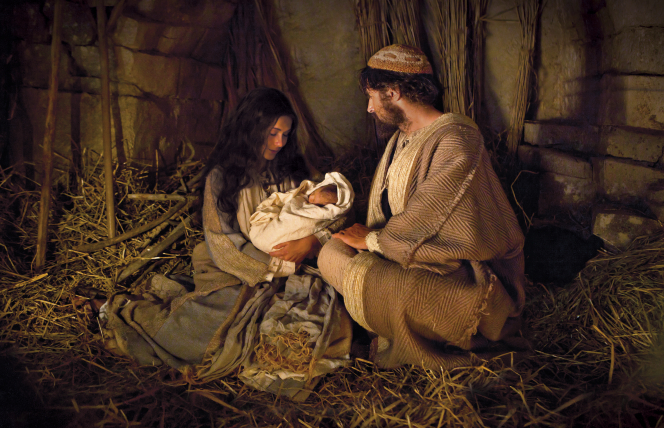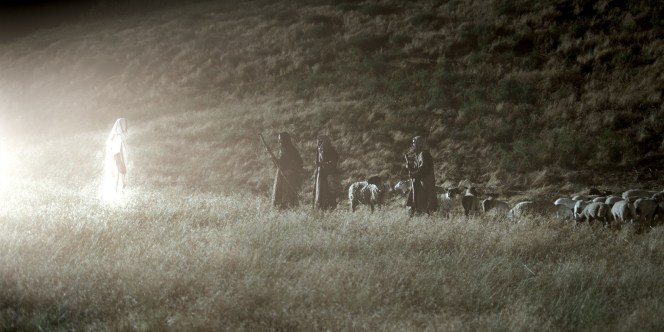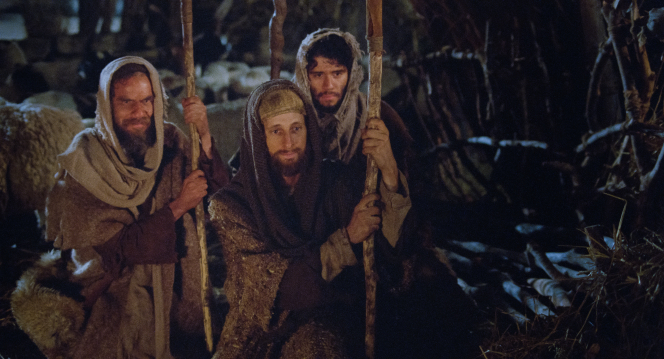
Each Christmas season, hundreds of millions of people remember the birth of our Savior. However, far fewer people consider the mathematics relating to the Nativity story. This blog post (and ones that will be published later this month) are intended to help people learn more about the math of Christ's birth. In this blog post, I will consider the shepherds. In blog posts later this month, I plan to consider (from a mathematical perspective) the Messianic prophecies, the wise men from the East, the new star that appeared, and the commercialization of Christmas. I sincerely hope these blog posts will be thought-provoking and faith-promoting for all who read them.
St. Luke recorded the following regarding Jesus' birth:
"And there were in the same country shepherds abiding in the field, keeping watch over their flock by night. And, lo, the angel of the Lord came upon them, and the glory of the Lord shone round about them: and they were sore afraid. And the angel said unto them, Fear not: for, behold, I bring you good tidings of great joy, which shall be to all people. For unto you is born this day in the city of David a Saviour, which is Christ the Lord. And this shall be a sign unto you; Ye shall find the babe wrapped in swaddling clothes, lying in a manger. And suddenly there was with the angel a multitude of the heavenly host praising God, and saying, Glory to God in the highest, and on earth peace, good will toward men. And it came to pass, as the angels were gone away from them into heaven, the shepherds said one to another, Let us now go even unto Bethlehem, and see this thing which is come to pass, which the Lord hath made known unto us. And they came with haste, and found Mary, and Joseph, and the babe lying in a manger (Holy Bible KJV, Luke 2:8-16)."
Up until the time that Joseph was sold into Egypt, shepherding was considered by the Hebrews to be a noble occupation. The Egyptians, however, considered shepherds to be the scum of the earth. By the time Moses led the Israelites out of Egypt, the Israelites possessed the Egyptian view of shepherds. When David, a shepherd, was anointed by Samuel, defeated Goliath, and became a powerful Israelite King, the Israelites' view toward shepherds improved. However, this did not last long. By the time Christ was born, shepherds belonged to Israel's lowest social status. The Jewish religious leaders had officially given shepherds the title of "sinners". (With this in mind, it is interesting to consider the fact that Christ referred to himself as a shepherd.)
From, a mathematical perspective, it is quite profound that Angels visited the shepherds. When Christ was born, an enormous number of people were less than 10 miles away. We read in Luke:
"And it came to pass in those days, that there went out a decree from Cæsar Augustus, that all the world should be taxed. (And this taxing was first made when Cyrenius was governor of Syria.) And all went to be taxed, every one into his own city. And Joseph also went up from Galilee, out of the city of Nazareth, into Judæa, unto the city of David, which is called Bethlehem; (because he was of the house and lineage of David) (Holy Bible KJV, Luke 2:1-4)."
There is also considerable evidence suggesting that Christ was born on 15 Nisan (See Note 1 to learn more). This would correspond to the Jewish Passover. Because people were gathering to be taxed and for the Passover, Jerusalem and its suburbs (including Bethlehem which is only 5 miles away from Jerusalem) would have been packed. This is why there was no room for Mary and Joseph in the inn. A famous Jewish historian, Josephus, wrote that approximately 1,197,000 people were gathered together in Jerusalem for the Passover in 70 A.D. (See Note 2 to learn more.) We can assume that a similar number of people were within walking distance of the Christ child when he was born.

The Bible does not state how many shepherds were visited by angels. However, the text suggests that it was not a very large number. If we make the liberal guess that there were 30 shepherds who visited Christ the night of His birth, that is still only about 0.000025 percent of the people who could have visited Him that night. The angels visited an extremely small number of people at the very bottom of the culture's caste system!
Why did angels come to a small group of social outcasts? Why didn't they announce Christ's birth to the kings and priests? Why did Luke choose to record something about shepherds? We may never know all of the specific reasons during our earth life. However, there are clear lessons to be drawn from the shepherds; the numbers vividly show that God loves all of His children regardless of economic or social status. As St. John beautifully expressed:
"For God so loved the world, that he gave his only begotten Son, that whosoever believeth in him should not perish, but have everlasting life (Holy Bible KJV, John 3:16)."
Continued at Math of Christ's Birth Part 2: Messianic Prophecies
Note 1: Nisan was the first month of the Hebrews' religious calendar and the seventh month of their political calendar. 15 Nisan corresponds to the beginning of April. Christmas is celebrated on December 25, but it is unlikely that Christ was actually born on that day. For example, the shepherds were spending their night outside. Most shepherds in Judea did not spend their nights outside with their flocks during the cold and rainy winter. Furthermore, the Romans typically did not have people gather to be taxed during the winter. Most scholars believe that early Christians picked December 25 for Christmas to correspond with the timing of Pagan festivals for the birth of the sun. Doctrine & Covenants 20:1 says, "The rise of the Church of Christ in these last days, being one thousand eight hundred and thirty years since the coming of our Lord and Savior Jesus Christ in the flesh, it being regularly organized and established agreeable to the laws of our country, by the will and commandments of God, in the fourth month, and on the sixth day of the month which is called April." Many LDS Church leaders and scholars have understood this verse to mean that Christ was born on April 6. Other Church leaders and scholars disagree. Regardless, 15 Nisan does happen to correspond well with Messianic prophecies and Jewish traditions regarding the Messiah.
Note 2: Josephus was born in Jerusalem, but later became a Roman. He was commissioned by the Roman Emperor to write a comprehensive history of the Jews. His writings are commonly quoted in Biblical commentaries. The Passover in 70 A.D. was when the Roman Emperor, Nero, destroyed Jerusalem. According to Josephus, most of the people who had gathered for the Passover were slain, and the rest were sold into slavery. That event (known as the Siege of Jerusalem) played a major role in the Apostasy of the Early Christian Church, but that's a different topic for a different blog post.
Feel free to comment with any questions you may have.

No comments:
Post a Comment